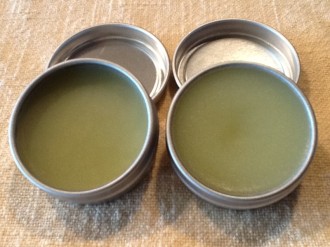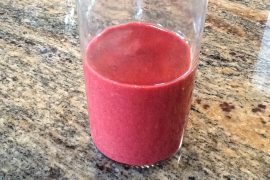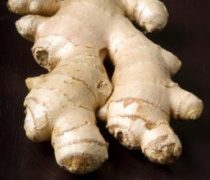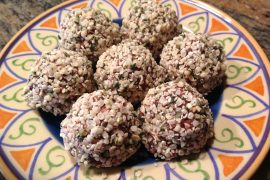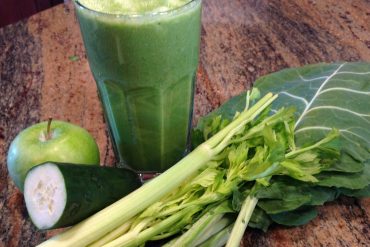Making salves is incredibly easy. Salves are wonderful to have on hand for everything from bumps and bruises to insect bites, cuts, swelling and more. They are easy to store and are a wonderful addition to your home first aid kit. They are relatively inexpensive to make and they also make wonderful gifts. The thing I appreciate the most about making a salve, is that it is totally customizable.
If you are looking for supplies to make these salves, Mountain Rose Herbs is my favorite source. They carry tins, oils, herbs and beeswax and more.
Infusing Oil
The first step to making a salve is infusing oil. You can use any organic oil you like. I prefer to use olive oil, sesame, or almond.
Quick Method:
1. Add 1 cup of oil to a saucepan. Add in approximately 1 to 2 ounces of dried herbs. Place on stovetop.
2. Keep the burner at the lowest possible temperature for 3-5 hours, until the oil takes on the color and scent of the herbs.
3. Line a strainer with cheesecloth or muslin and place over a bowl. Pour oil into the strainer.
4. Squeeze or press the herbs to remove all of the oil.
At this point you can keep this as infused herbal body oil or follow the additional steps to create a salve. If keeping as oil, be sure to place in labeled jar. Infused body oil will last approximately one year if stored properly in a cool dark place. You can also add Vitamin E oil as a preservative to extend the shelf life.
Slow Method:
If you are not in a rush, you can simply add your herbs and oil to a glass jar and allow the heat of your home and the sun to infuse the oil for you.
Directions:
1. Place dried herbs in a clean dry glass jar.
2. Cover herbs with oil, the oil should be 1-2 inches above the herbs.
3. Cap your jar tightly and place somewhere warm, but not in direct sun.
4. Shake the jar at least once a day.
5. If herbs absorb all of the oil, add more so they are completely covered.
6. Soak herbs for 2-6 weeks until the oil takes on the color and scent of the herbs.
7. Line a strainer with cheesecloth or muslin and place over a bowl. Pour oil into the strainer.
8. Squeeze or press the herbs to remove all of the oil.
At this point you can keep this as infused herbal body oil or follow the additional steps to create a salve. If keeping as oil, be sure to place in labeled jar. Infused body oil will last approximately one year if stored properly in a cool dark place. You can also add Vitamin E oil as a preservative to extend the shelf life.
From Herbal Body Oil to Herbal Salve
To convert your body oil to a salve takes minutes. You can customize your salve to a softer or more firm consistency by simply adjusting the beeswax. The basic formula for a salve is 1 ounce of beeswax for each cup of oil.
Directions:
1. Place your infused oil in a saucepan and warm.
2. Add 1 ounce of shaved beeswax to oil and allow wax to melt.
3. Remove the pan from the heat and dip a spoon into the oil mixture.
4. Place the spoon in the fridge or freezer to test the consistency, just long enough to harden.
5. Remove spoon and check your salve. If it’s too soft, add more beeswax. If it’s too hard add more oil.
6. Continue with steps 5 and 6 until you achieve your desired consistency.
7. Once the mixture is at your chosen consistency, pour into jars or containers and allow to harden.
Remember to label your creations and store in cool places.
From Herbal Body Oil to Herbal Salve for Vegans
1. Melt 1 cup vegetable shortening in a saucepan on the lowest heat setting.
2. Add 1/2 cup dried herbs to oil.
3. Allow herbs to steep in oil for approximately one hour, stir frequently.
4. Line a strainer with cheesecloth or muslin and place over a bowl. Pour oil into the strainer.
5. Pour into a labeled jar, allow to harden.
6. Squeeze or press the herbs to remove all of the oil.
Remember to label your creations and store in cool places or the salve will melt.

Herb Options
When it comes to making your own salve, you can choose to use a single herb or a combination. The wonderful thing about making your own salves and herbal body oil is you get to customize the salve to your own needs.
Although the list below is not all inclusive, it is a good starting place.
Arnica flowers: Can help treat physical trauma, bruises, bunions, strains, sprains, some kinds of arthritis, and muscle pain. Use immediately after strenuous exertion or injury to prevent, relieve, and reduce swelling, bruises and pain.
Burdock root: For treating psoriasis, eczema, and skin infections.
Calendula flowers: Wonderfully healing with all-around healing properties useful for a wide variety of skin irritations and conditions including wounds, insect bites, rashes, scrapes, abrasions, cuts, inflammations, and much more. Suitable for sensitive skin and babies.
Chamomile flowers: Hemorrhoids, minor abrasions, cuts, scrapes, and wounds.
Chickweed: Soothing, helps with skin conditions including psoriasis, eczema, minor burns, rashes, and other skin irritations.
Comfrey leaf and/or root: Relieves pain, swelling, promotes the growth of muscle, cartilage, and bone. Assists with healing a wide variety of conditions including sprains, eczema, dermatitis, viral skin infections, broken bones, arthritis, wounds, and bruises.
Echinacea herb and/or root: Antibacterial, beneficial for sores, wounds, insect bites and stings.
Ginger root: Warming, use for arthritis and sore muscles.
Goldenseal leaf and/or root: Antibacterial and anti-inflammatory properties, useful for treating wounds and skin conditions.
Lavender flowers: Soothing, calming, relieves hemorrhoids, pain, has healing properties beneficial for wounds and numerous skin conditions.
Myrrh Gum powder: Antiseptic properties, used for cuts, scrapes, scratches, and abrasions.
Nettle leaf: Anti-inflammatory, an effective treatment for many skin conditions.
Oregon Grape root: Skin disinfectant, antibacterial, anti-microbial, helps heal wounds.
Plantain leaf: Antibacterial, antimicrobial, anti-inflammatory, and antitoxic properties. Helps speed the recovery process, prevents infection, relieves and soothes insect bites and stings, pain, poison ivy, itching, rashes, sores, bruises, blisters, and damaged skin.
St. John’s Wort: Anti-inflammatory and astringent properties. Beneficial for wounds, cuts, bruises, swelling, varicose veins, insect bites and stings, nerve damage, scrapes, rashes, burns, and pain.
Thyme: A strong antiseptic used for cuts, scrapes, and sore muscles.
Yarrow Flowers: Apply to bruises, sprains, wounds, cuts, rashes, eczema, scrapes, and areas with swelling and bleeding.

